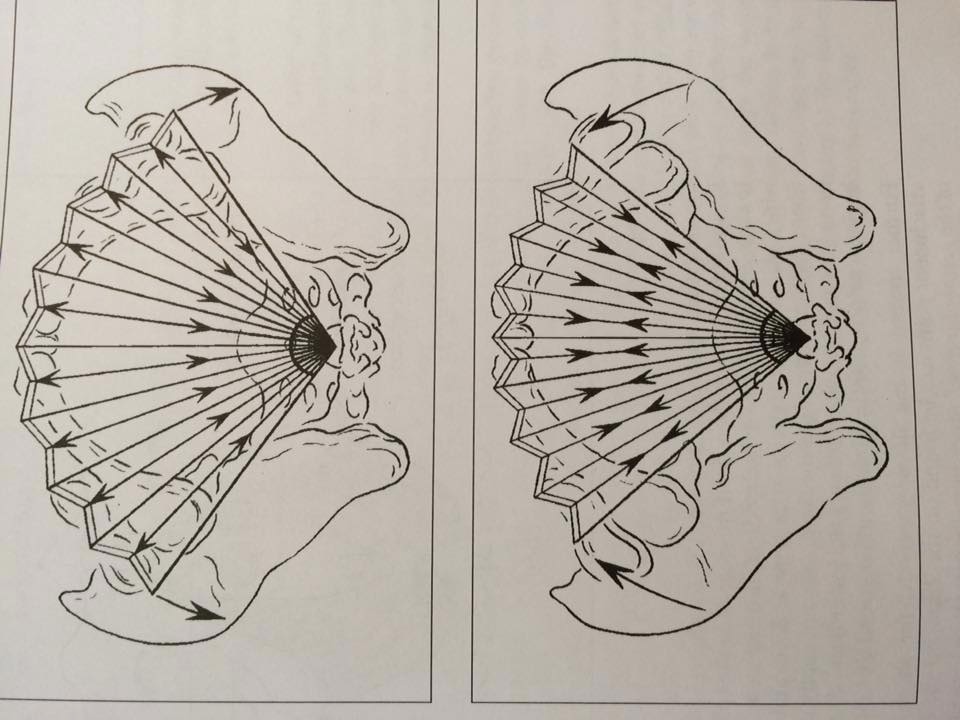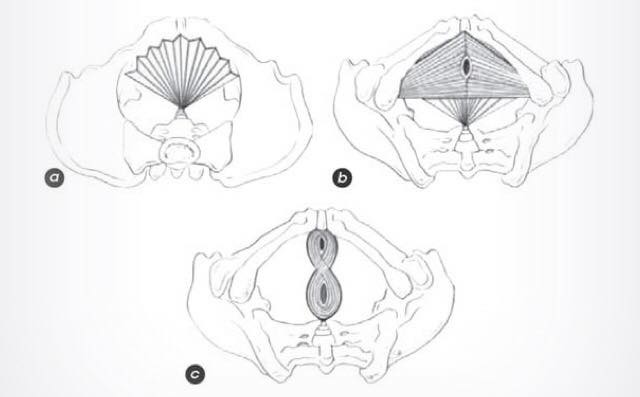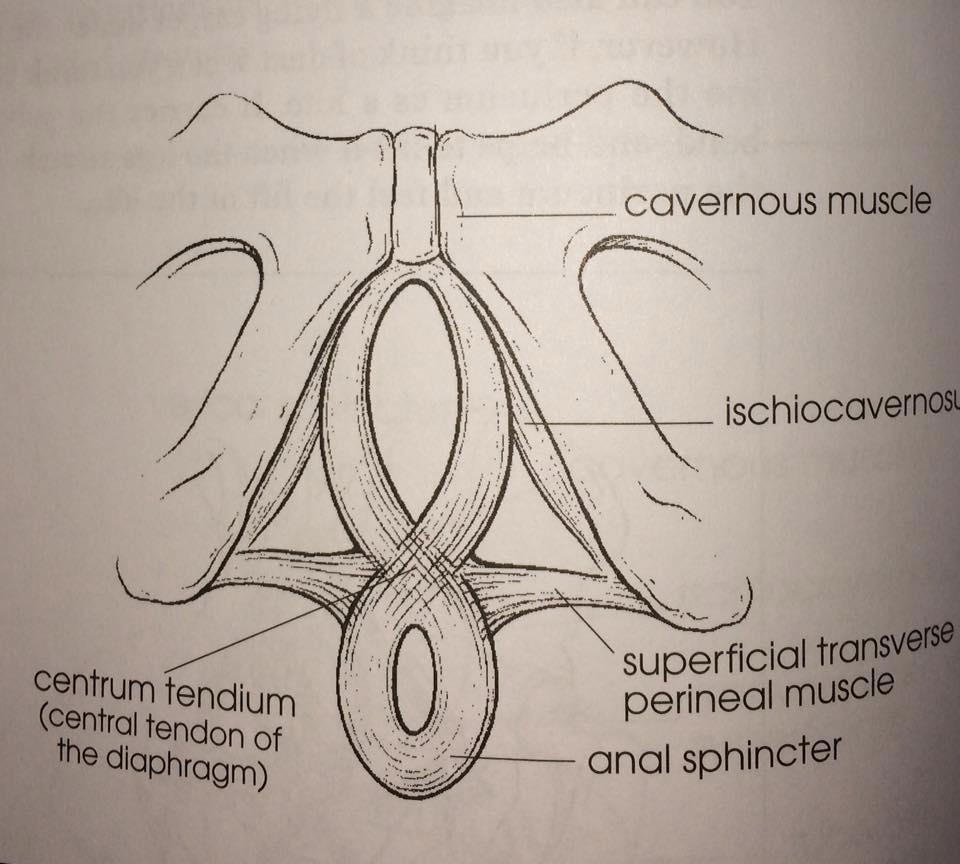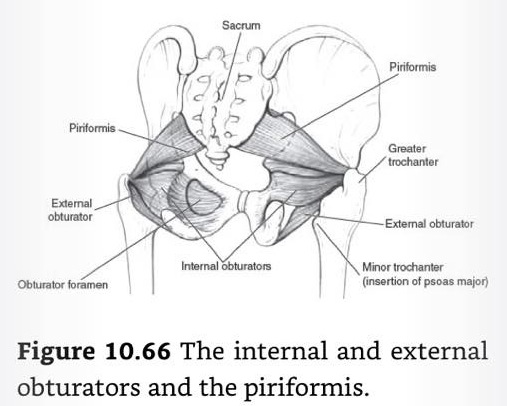100 Days of Franklin - Week 9: Pelvic Floor
Week 9
Thanks to Vera for last week’s deep dive into breathing! Next week, we can look forward to Gilles bringing us some Franklin applied to everyday activities.
This week we’re going to work on three exercises to develop the pelvic floor - and add various images to develop greater awareness of it.
Day 57
Recall the shape of the pelvis. In particular, how the pelvic halves have their “heels”, the sit bones. From the sitbones, if you work your way upwards, inwards and forwards, you arrive at the pubic symphysis. The two sitbones and pubic symphysis form a triangle, across which a complex of muscles is stretched. Visualise this large muscle triangle while standing, and how it stretches and releases as you go in and out of plié.
Now lie on your back, knees bent, with two exercise balls or a rolled up cloth under the pelvis, positioned far apart and in a way that the support the pelvis without bowing the back. Lie your hands on the inner sides of the spread thighs. Again, visualise the shape of the large muscle triangle. Imagine this triangle getting smaller, its sides getting closer, as the sit bones come together. This lets the thighs lift/come together a little. Make sure your breath and shoulders stay relaxed.
Now imagine the triangle widens. The legs react with a slow lateral sinking. Lift and sink 5-7 times. Focus on a smooth, relaxed, flowing motion, allowing the muscles to glide in and out of each other.
How does your pelvic floor feel after this?
Day 58
New day, new triangle.
Start with some tapping of the pelvis, noting the landmarks (ASIS, PSIS, Sacrum, Sitbones, Pubic Symphysis, and the lines that connect them.
Repeat yesterday’s exercise.
Now we’re going to work on the tailbone-sitbone triangle, which is like a fan, starting at the tailbone and going forwards (it actually extends forwards of the sitbones to join part of the pubic bones going up towards the pubic symphysis).
From sitting, observe this fan and visualise its ability to be strong and supple at the same time. Breathe in, letting it expand, and breathe out letting it contract. Bend at the hips and feel it widen until the fan is stretched to its maximum. As you straighten up watch it contract again. As you actively contract further, your pelvis will tilt back. As you tilt forward again, the fan immediately widens.

Repeat this rocking back and forward a dozen or so times until you can see the fan in full action (Pelvic Power, 4.3)
Day 59
Tap the pelvic area and repeat the two exercises we have covered so far this week (using the large pubic triangle while lying supine, using the tailbone fan for tilting the pelvis while sitting).
Third exercise for the week.
Stand straight, feet parallel and shoulder-width apart. Touch the right hip joint and the tailbone and imagine a connection between the two spots.
A loosening energy flows from the hip joint to the coccyx. It is an energy that not only increases the tones, but has a softening and loosening effect. This energy creates space in the pelvic floor and promotes flexibility in the hip joint. No imagine that the tailbone and the hipt joint move closer to each other. The muscles between the tailbone and the hip joint slide into each other. After a rest, they again move away from each other, the muscles sliding apart from each other.
Repeat this pulling together and away a few times, and take a bit of time to compare the feelings of the two halves of the pelvis. Alternately lift the right an left legs; is there a difference?
Day 60
Before going through this week’s three exercises, we’ll add a little knowledge about the muscles of the pelvic floor.

Going top to bottom, we first have the levator ani. This is composed of multiple strands, fanning forward from the tail bone to the sit bones and the rami of the pubis.
Next we have the transversus perineum, a triangular sail between the sit bones and the pubic symphysis.
Bottom most are some figure eight muscles that intersect at the perineum and circle round the anus and urethra/vaginal opening.
The supine exercise for this week focuses on the transversus perineum, while the sitting and standing exercises focus on the levator ani.
Day 61
It’s constructive rest friday!
Lie in constructive rest and imagine performing 15 repetitions of each of this week’s exercises.
The pelvic floor has a number of related and, occasionally, conflicting roles to play - procreation, pleasure, waste evacuation, stabilisation, shock absorption, breathing, and as a cradle for holding in the pelvic organs.
Even with just stabilisation (e.g. a stronger pelvic floor allows the hip joint to be more free to move without gripping), and shock absorption (in plié, the widened pelvis transfers much of its potential energy into the pelvic floor), we see the need for a pelvic floor that is both strong and supple. Although you may have different weaknesses (men typically lack in suppleness and women in strength), the goal of pelvic floor training is to improve both these aspects.
As part of your constructive rest, meditate on the different functions of the pelvic floor.
Day 62
Let’s add just a little bit more information and knowledge and see the effect on this week’s 3 exercises.
The figure eight muscles and tendons run round the anus, intersect at the perineum and then run up and form the edge of the vagina/surround the base of the penis. The “top” half of this figure eight is “on” the big triangle (transversus perineum). It breaks up this big triangle into two small triangles along the base, and the diamond/oval shape inside the top half of the figure 8. We can focus on these two small triangles when working on exercises that use the transversus perineum (e.g. this week’s supine exercise)

An additional strand of the fan stemming from the tailbone (actually the sacrum) is the the piriformis. This stretches round the outside of the sitbones to attach on the femur at the greater trochanter. As you work on this week’s sitting and standing exercises, you can imagine the piriformis also forming part of the pelvic floor.

(Also, if you think of plié action, where the sitbones come closer (fanning out) to the greater trochanter (rotating out), and the sacrum nutates, you can see how the piriformis is going to be extremely important in allowing this movement to happen - relating sacral movement to femur rotation and stretching to accomodate the stretching apart of the sitbones.)
Day 63
Last day working on the pelvic floor. We’ll come back to in a couple of weeks, to work on all its synergistic movement with the rest of the body (feet, diaphragm, mouth, first rib, and more…). In a few weeks, we’ll also look at the psoas. For now, imagine the psoas as the line between your lumbar/bottom thoracic vertebrae and your minor trochanter - the inside of the femur, near the head/pelvis. One of the functions of the psoas is as a lower back flexor (back flexion is when the spinal processes move apart and the back bends forward). Lower back flexion is accompanied with narrowing of the tuberosities, and therefore of the pelvic floor.
So you can think of the shortening of this muscle as accompanying any contracting of the pelvic floor. And any widening of the pelvic floor as being accompanied by the extension of the psoas.
The psoas is also a hip flexor. It raises your femur from the lower back. When the femur cannot move (e.g. because your are standing and the femurs are fixed), if it the psoas tight, it will “pull” on the lower back, increasing its curve (sway back or lordosis). This will have a tendency to widen the tuberosities (and therefore widen the pelvic floor), contrary to the primary function of the psoas. (I’m confused about this, because in plié, the pelvic floor widens and the psoas - correctly - shortens, whereas in other situations, it seems like the the psoas should extend as the pelvic floor widens, and shorten as the pelvic floor contracts).
In all three of this week’s exercises, examine what the psoas is doing as the pelvic floor widens and narrows. Probably it should be working with rather than against the pelvic floor.
(Note: you can see how a stronger, looser pelvic floor will support a stronger looser psoas, and vice versa. Which sounds like a good thing all round).